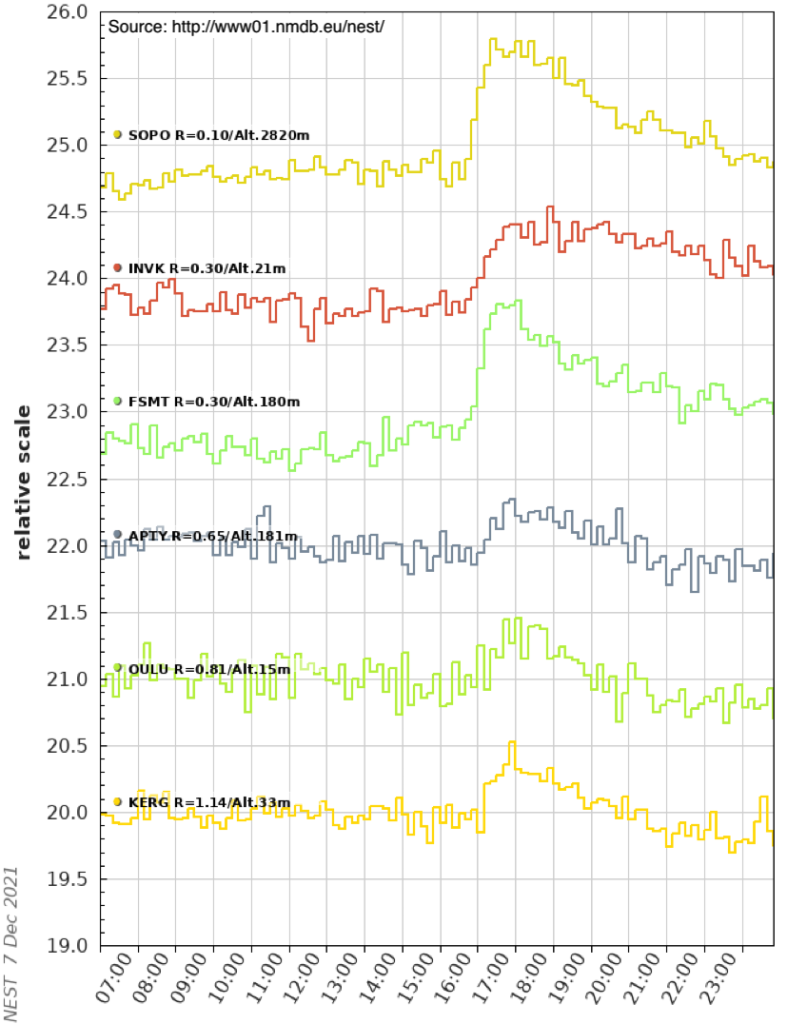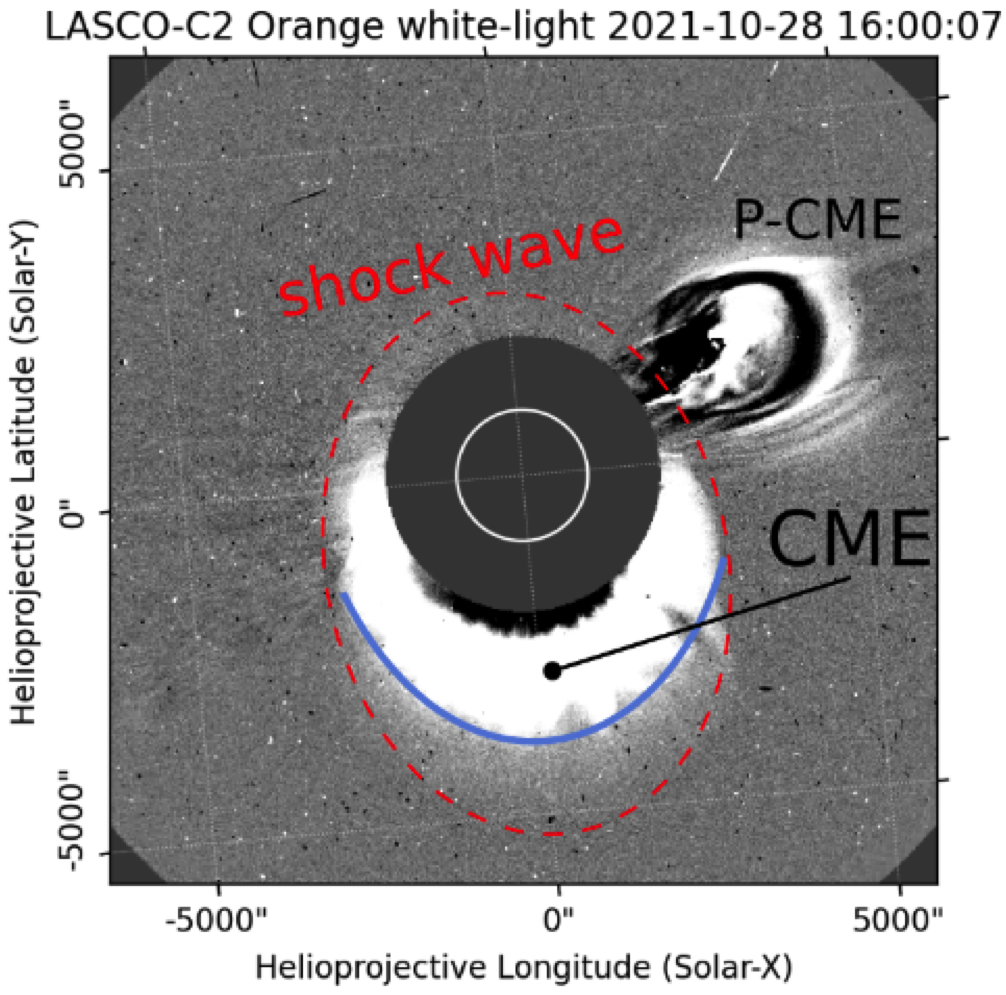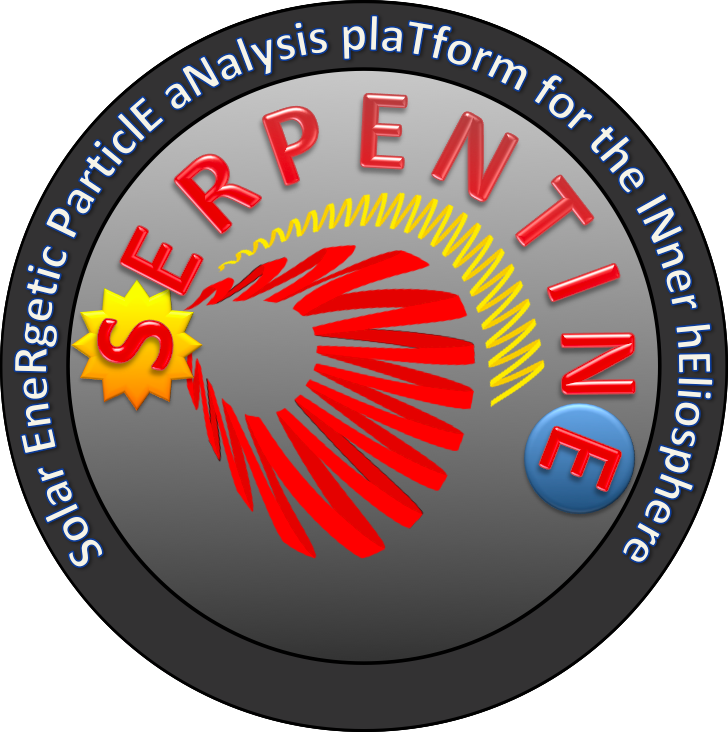An active region near the central meridian of the Sun ejected a very fast coronal mass ejection (CME) at about 15:28 UT on 28 October 2021. The CME plasma cloud had a speed of about 2000 km/s (more than 7 million km/h), and it drove a shock wave through the ambient solar coronal plasma. This eruption was also related to a solar X-ray flare that reached the most intense category in the commonly used flare classification, named X-class.
The eruption was extremely efficient in accelerating energetic particles. Protons were accelerated most likely in the strong CME-driven coronal shock wave to energies that reached the threshold of producing a ground-level enhancement (GLE) at Earth. This means that ground based cosmic-ray instruments called neutron monitors detected the eruption in polar regions, indicating that the speeds of the accelerated protons approached the speed of light. This GLE was only the 73rd detected since the 1940s, and the first of the present solar cycle.
Dr. Athanasios Papaioannou from National Observatory of Athens led the first study on the GLE event.
– GLE 73 was a special event in many interesting aspects. For example, although it produced very energetic protons, at lower energies the proton peak intensities were at a significantly lower level than in typical GLEs, explains Dr. Papaioannou.
The SERPENTINE project team participated in the study of the event. Our main contribution was a detailed analysis of the eruption based on imaging observations from SOHO, STEREO and Solar Dynamics Observatory missions.
– These observatories provide two different viewpoints on the CME, which allows for a determination of the three-dimensional structure of the CME and the shock wave that it drives, explains Dr. Athanasios Kouloumvakos from IRAP, Toulouse, who was responsible for the CME analysis.
– Through our analysis, we could obtain some observational evidence for the shock origin of the GLE.
The GLE event was a multi-spacecraft solar energetic particle (SEP) event in the inner heliosphere. We performed a preliminary analysis of the event so far using particle measurements from three separate locations, i.e., near-Earth spacecraft, Solar Orbiter and STEREO A. The next steps in the analysis will be to combine data from all available spacecraft in the inner heliosphere and try to deduce if the obtained preliminary understanding of the GLE being produced by the expanding CME-driven shock wave withstands the more detailed observational analysis.
It is great to see the solar activity picking up and the Sun producing large SEP events while we are still in the early phases of the project!


Reference
A. Papaioannou, A. Kouloumvakos, A. Mishev, R. Vainio, I. Usoskin, K. Herbst, A. P. Rouillard, A. Anastasiadis, J. Gieseler, R. Wimmer-Schweingruber, and P. Kühl: The First Ground Level Enhancement of Solar Cycle 25 on 28 October 2021. Astronomy & Astrophysics arXiv:2202.07927

